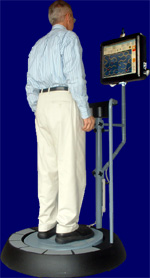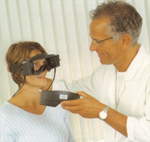HOW BALANCE WORKS:
Your brain, muscles, and bones work together to maintain your body’s balance and to keep you from falling, whether you’re walking, rising from a chair, or climbing stairs. They also let you navigate sloping or uneven surfaces.
Balance relies on three types of sensory information. The first of these is visual: Your eyes tell you about your environment and your place within it. They help you sense obstacles and potential dangers, and form motor memories that prevent falls. The second type of sensory information comes from your body’s internal sense of spatial orientation, independent of vision. This allows you, for example, to close your eyes and then wiggle your foot in any direction, while still knowing which way your foot is pointed. The third type of sensory information is provided by your inner ears, which contain fluid-filled semicircular canals. These canals provide your brain and eyes with crucial information on the position of your head and its movement in space with respect to gravity. (Common problems related to the workings of the inner ear include dizziness on escalators and sea-sickness.) When your sense of balance is in good working order, the three elements of balance work together automatically with your musculoskeletal system to keep you mobile and to prevent falls.
There are various reasons why your sense of balance can become impaired. In older adults, poor posture—particularly if you tend to slouch forward and have rounded upper shoulders—can sometimes cause unsteadiness. Furthermore, your base of support is important in keeping you balanced: if you have a wide “pyramid”-type stance, you’re less likely to lose your balance or fall than if your feet are close together in a “pencil” stance. Disease can also rob you of a strong sense of balance. People with diabetes, for example, may suffer from numbness in the lower extremities and feet— a problem that makes detecting obstacles or dangers more difficult. People with arthritis, or who have had surgery on their hips, knees, or feet, may lack the flexibility and range of motion necessary to avoid falling.
Strength, flexibility, and endurance are crucial to maintaining balance and preventing falls. Even if your basic perception of balance is good— you have normal vision and no inner ear problems— you can still be at risk for falls if your muscles are weakened or stiff, or if you tire easily. Older adults— particularly those with osteoporosis (the disease that causes brittle bones)— have very legitimate concerns about falling and often restrict their physical activities to prevent such a mishap. Ironically, lack of exercise only makes it more likely that a fall will occur— and a vicious cycle has been put into motion.
Making Your Home Safer
Preventing falls is easier than treating them. You can evaluate your home environment with the goal of minimizing clutter, loose rugs, slippery conditions, uneven surfaces, and unsecured cords and wires—in short, anything that could cause a fall. Good lighting and well thought out placement of furniture can also help prevent mishaps.
John’s Hopkins University




